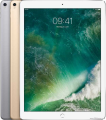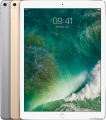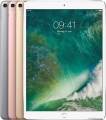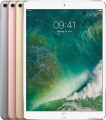Apple iPad Air 2 Prices
Important Note.
- All prices are in Pakistani Rupee (PKR)
- Prices may vary at stores and our effort will be to provide you with the updated prices.
- The latest price of Apple iPad Air 2 was obtained on 17 مئی, 2019. The prices at the original stores had been updated on the respective mentioned dates.
- Find out what tablets price has dropped in Pakistan by selecting Notify Price Drop button
- Find out what tablets has better specifications by clicking Add To Compare Button find out what tablets has better reviews by visiting our reviews section
- Find out what tablets is cheaper on which retailer by clicking Compare prices from retailers button
Search Terms
- Apple iPad Air 2
Specifications
| GENERAL | |
| 2G Network | GSM 850 / 900 / 1800 / 1900 CDMA 800 / 1900 |
|---|---|
| 3G Network | HSDPA 850 / 900 / 1700 / 1900 / 2100 CDMA2000 1xEV-DO |
| 4G Network | LTE band 1(2100), 2(1900), 3(1800), 4(1700/2100), 5(850), 7(2600), 8(900), 13(700), 17(700), 18(800), 19(800), 20(800), 25(1900), 26(850), 28(700), 29(700), 38(2600), 39(1900), 40(2300), 41(2500) - A1567 |
| Sim | Nano-SIM/ Electronic SIM card (Apple e-SIM) |
| Announced | 15/10/2014 |
| Status | Available. Released 2014, October |
| BODY | |
| Dimensions | 240 x 169.5 x 6.1 mm (9.45 x 6.67 x 0.24 in) |
| Weight | 437 g (Wi-Fi) / 444 g (3G/LTE) (15.41 oz) |
| DISPLAY | |
| Display Size | 9.7 inches, 291.4 cm2 (~71.6% screen-to-body ratio) |
| Resolution | 1536 x 2048 pixels, 4:3 ratio (~264 ppi density) |
| MultiTouch | Yes |
| Protection | Scratch-resistant glass, oleophobic coating |
| SOUND | |
| AlertTypes | N/A |
| LoudSpeaker | Yes, with stereo speakers |
| 3.5mm jack | Yes - Active noise cancellation with dedicated mic |
| MEMORY | |
| CardSlot | NO |
| Internal | 16 GB, 2 GB RAM |
| DATA | |
| GPRS | Yes |
| EDGE | Yes |
| Speed | HSPA 42.2/5.76 Mbps, LTE-A Cat4 150/50 Mbps, EV-DO Rev.A 3.1 Mbps |
| WLAN | Wi-Fi 802.11 a/b/g/n/ac, dual-band, hotspot |
| Blue Tooth | 4.0, A2DP, EDR |
| USB | 2.0, proprietary reversible connector |
| CAMERA | |
| Camera Primary | 8 MP (f/2.4, 31mm, 1.12 µm), autofocus |
| Camera Features | Geo-tagging, touch focus, face/smile detection, HDR (photo/panorama) |
| CameraVideo | 1080p@30fps, 720p@120fps, HDR, stereo sound rec |
| CameraSecondary | 1.2 MP (f/2.2, 31mm), 720p@30fps,, face detection, HDR, FaceTime over Wi-Fi or Cellular |
| FEATURES | |
| Processor Cores | Tripple-Core |
| OS | iOS 8.1, upgradable to iOS 11.2 |
| CPU | Triple-core 1.5 GHz Typhoon |
| Sensors | Fingerprint (front-mounted), accelerometer, gyro, compass, barometer |
| Messaging | iMessage, Email, Push Email, IM |
| Browser | HTML5 (Safari) |
| Radio | No |
| GPS | Yes, with A-GPS, GLONASS (3G/LTE model only) |
| Colors | Space Gray, Silver, Gold |
| Others | - Siri natural language commands and dictation - iCloud cloud service - MP3/WAV/AAX+/AIFF/Apple Lossless player - MP4/H.264 player - Audio/video/photo editor - Document editor |
| BATTERY | |
| Battery | Non-removable Li-Po 7340 mAh battery (27.62 Wh) |
| TalkTime | Up to 10 h (multimedia) |
| MISC | |
Reviews
Price: From £399 inc VAT
Rating: 9
Today (27 January 2015) the iPad is five. Apple's latest model, the iPad Air 2, is thinner, faster and better than ever. Here's our iPad 2 review.
Apple has updated its full-size Apple iPad Air, and its replacement is known as the iPad Air 2. The new model keeps the same essential form – the same height and width, screen size and resolution – but includes some changes that raise it above the originaliPad Air that was launched in October of last year. For more on the UK tablet market, see Best tablets of 2014.
iPad Air 2 review: thinner frame
And Apple has taken some things away. Our calipers tell us that’s 1.2 mm of thickness gone. The new iPad is now 6.3 mm thick, against 7.5 mm for last year's iPad Air.
Replacing the Apple A7 processor is this year’s new chip, the Apple A8 that features in the iPhone 6. Only this time it’s known as the A8X, with unspecified improvements in its performance.
What we do now know however is that the Air 2 packs 2 GB of memory, against 1 GB that’s been installed in every iPad since the iPad with Retina display – aka, ‘the iPad 3’.
Apple claims this processor is 40 percent faster, with graphics 2.5 times better than found in the Apple A7 chip in the first iPad Air.
We put the chip through some tests of raw speed using the Geekbench 3 benchmark tool. With a single core from its three-core architecture, it scored 1816 points; and multi-core mode it scored 4523 points. That’s up on the 1468 and 2658 results from last year’s model.
Graphics performance is harder to put a number to at the moment. GFXBench does a good job of showing framerates with some varied simulated games, but a temporary software issue means the final results are not displayed on screen. We’ll update this when a new build that fixes this is released through the App Store soon.

iPad Air 2 review: Touch ID
Also bringing Apple’s pace-setting tablet up to date is a Touch ID fingerprint sensor, first introduced with the iPhone 5s last year. The Touch ID button feels just like that on recent iPhones. You dab your dab on its little sensor, and the iPad comes to life.
In use this was very speedy, with the screen quickly unlocking in a fraction of a second after we applied our registered fingertip. It’s a handy feature, if not our favourite revision to the model since we don’t have to start and stop the display anything like as frequently as we daily do on an iPhone.
This will be an asset if you’re a compulsive shopper on the iTunes Store though, as you can also authenticate to buy apps and media this way, without the tedious typing of your Apple ID password.
We’ve had a few days to try the iPad Air 2 now. The first impression was very good – as a regular iPad Air user we could feel straight away that this is lighter again. Not much – we’re talking about a reduction of around 20 or 30 g depending on model – and yet this makes the iPad even airier than its ever been before.
iPad Air 2 review: light weight
According to Apple’s specs, the standard iPad Air 2 weighs 437 g while adding a 3G/4G modem results in 444 g. Our sample was closer to 467 g on the scales, or 20 g lighter than the comparable 2013 model.
Some weights-and-measures spec changes can be seen as more useful for marketing purposes. Who cares if a phone is 8 or 7 or 6 mm thick? But in reducing the weight of a book-like computing slate you’ll hold in your hand for long periods of time, any weight loss becomes a bigger deal.
Besides removing a little under an old-school ounce from the iPad, Apple’s also swiped the screen-lock switch. This is the handy little toggle situated just above the volume keys in the top right corner, a button that’s been there since the Mk 1 original iPad of 2010.
If you want to ensure your view doesn’t swing 90 degrees when you’re lying down to read, you’ll need to use the software button found in the Control Center. (See also: Apple iPad mini 3 first-look review.)
iPad Air 2 review: wireless performance
Wireless performance should be much improved, thanks to a move not only to 802.11ac Wi-Fi, but an implementation that again uses two internal aerials to provide a 2x2 MIMO configuration.
Be aware that smartphones sporting 11ac Wi-Fi that we’ve seen are currently using a single antenna, with 433 Mb/s maximum sync speed. A two-stream setup benefits from better reception and multiple-in, multiple-out (MIMO) radio as well as a theoretical sync speed of 867 MB/s. This will yield improved range besides simply faster data connections.
iPad Air 2 review: cameras
Cameras front and back have been uprated, and the main iSight camera on the back can take panorama shots up to 43 megapixel in size. You can also dabble with slow-mo effects and time-lapse photography. The front FaceTime camera benefits from a new sensor said to give brighter results in lower light.
Main rear camera from Apple iPad 1 iSight camera
Main rear camera from Apple iPad 2 iSight camera

Comparing still images taken with the front-facing FaceTime cameras, iPad Air (left) and iPad Air 2 (right)
As well as the black and white finish options of Space Grey and Silver, you can now get the iPad Air 2 in a gold finish, just like the iPhone. (See also: Apple iPad Air 2 first-look review.)
Storage options have adopted Apple’s new policy of removing arguably the best balance between capacity and value, the 32 GB size model. Instead you’re presented with a choice of 16, 64 or 128 GB models.

iPad Air 2 review: battery life
There’s a smaller capacity battery inside the Air 2 – 27.3 Wh compared to 32.4 Wh in the Air 1 – although Apple specifies the same overall battery life of 10 hours of web surfing, video playback or music listening.
We tried a more stressful test than browsing, using looped gameplay from GFXBench to play the T-Rex sequence, 30 times over. This gave an estimated total runtime of 3 hour 53 minutes.
For reference we tried the same test on a year-old iPad Air 1. Both tablets were running the same build of the current latest iOS 8.1 software. Here the first Air posted an estimated total runtime of 4 hour 6 min.
But it’s vital to also look at the performance of both products. Over the length of the test, the first Air could play at an average framerate of 22.9 fps. Meanwhile the Air 2 played at more than twice that speed, recording 48.3 fps. This one test comes close to validating Apple’s claims for 2.5x graphics performance.
iPad Air 2 review: screen
Perhaps the best upgrade to the new iPad Air 2 is to the screen. The specs may look the same on paper, but Apple has now laminated the front glass to the LCD itself, a move that makes the display feel like solid glass again.
It’s also less reflective, whether from that assembly change or maybe some improved anti-reflective coating across the glass.
iPad Air 2 review: UK price
The iPad Air's UK price starts at £399 for the 16GB model in Wi-Fi only, moving up to £479 for 64GB Wi-Fi (as with the recent iPhones, Apple has removed the popular 32GB storage option, which will annoy some) and £559 for 128GB Wi-Fi. (Latter price corrected after useful post from andy m, comments below.)
The 3G/cellular models cost £100 more at each configuration: £499 for the 16GB model, moving up to £579 for 64GB and £659 for 128GB.
For comparison, the iPad Air's US price starts at $499 for the 16GB Wi-Fi model, $599 for 64GB Wi-Fi and $699 for 128GB Wi-Fi. The 3G/cellular models each cost $130 more: $629 for the 16GB model, $729 for 64GB and $829 for 128GB. See also: iMac with Retina 5K display release date, price and specs.
Buying Advice
Besides the Touch ID fingerprint feature, the new screen assembly and uprated processor are the headline features. New cameras are a bonus too. Overall the Apple iPad Air 2 is the best tablet you can buy, without even a close competitor in performance, attention to detail, quality of build and sheer usability.Write Your Own Review
My Recent Reviews
- Be first to post review for this product.
comments powered by Disqus




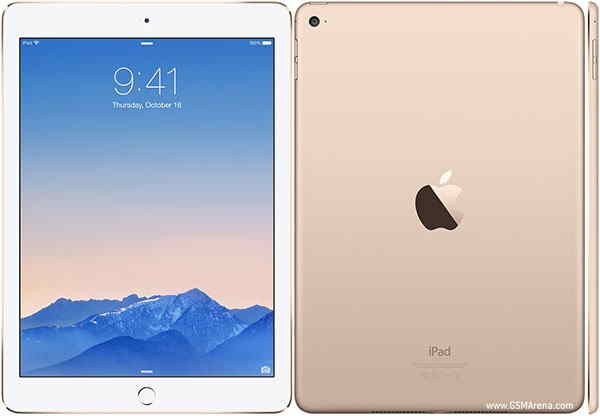
.jpg)
.jpg)
.jpg)



-32-GB.jpg)
